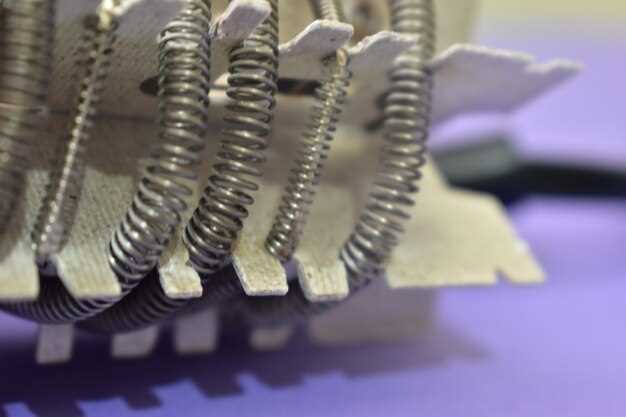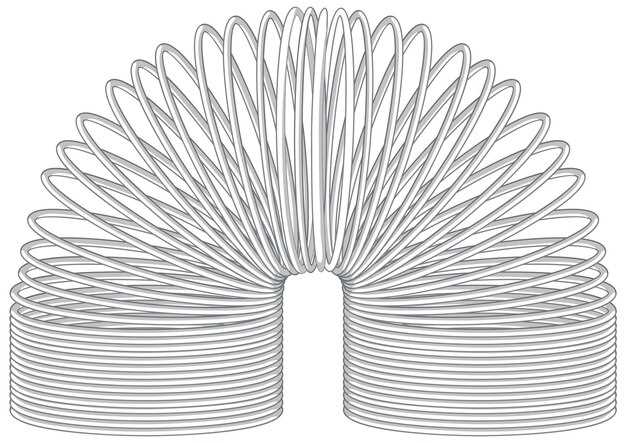Coil Springs vs. Leaf Springs – What’s the Difference?

When it comes to vehicle suspension systems, understanding the different types of springs is essential for both performance and comfort. Two of the most commonly used types are coil springs and leaf springs. Each has its own unique characteristics, advantages, and disadvantages that cater to specific needs and applications.
Coil springs are designed as helical systems that compress and extend to absorb shocks and support vehicle weight. They are generally more flexible and offer smoother rides, making them a popular choice in contemporary passenger vehicles and sports cars. The design allows for better handling and improved suspension articulation.
On the other hand, leaf springs consist of multiple layers of flat metal strips, which are stacked together to form a spring. This structure provides a robust support system, making them ideal for heavy-duty vehicles like trucks and SUVs. Leaf springs are known for their durability and load-bearing capacity, but they can sometimes result in a stiffer ride compared to coil springs.
This article delves deeper into the specific differences between coil and leaf springs, exploring their functionality, applications, and impact on vehicle dynamics. Understanding these differences will help vehicle owners and enthusiasts make informed decisions when evaluating their suspension systems.
Key Differences Between Coil Springs and Leaf Springs

When it comes to vehicle suspension systems, coil springs and leaf springs serve distinct purposes, each with unique characteristics that affect vehicle performance, handling, and load capacity.
Coil springs are helical in shape and are commonly used in modern vehicles. They provide a smooth ride by allowing for greater flexibility and adaptability to various road conditions. Their design allows for independent movement of the wheels, which enhances traction and stability. Additionally, coil springs tend to require less space, making them suitable for a broader range of vehicle designs.
In contrast, leaf springs consist of several stacked metal plates that form a curved shape. They are traditionally used in heavier vehicles, such as trucks and SUVs, due to their high load-bearing capacity and durability. Leaf springs are known for their strength and simplicity, which makes them easy to repair and replace. However, they can limit independent wheel movement, resulting in a harsher ride quality compared to coil springs.
Another key difference lies in the setup and installation. Coil springs typically work with shock absorbers to provide better handling and comfort. Leaf springs, however, are often combined with additional components such as shackles and hangers, which can complicate their setup. This difference can influence not only ride quality but also overall maintenance and tuning of the suspension system.
In terms of load capacity, leaf springs generally outperform coil springs. They are excellent for supporting heavy loads and are less likely to sag under substantial weight. Coil springs, while adequate for standard loads, may require upgrades or enhancements when dealing with heavier loads.
Ultimately, the choice between coil springs and leaf springs depends on the specific use case of the vehicle. While coil springs excel in providing comfort and handling for everyday vehicles, leaf springs are optimal for heavy-duty applications necessitating strength and durability.
Advantages of Coil Springs in Modern Suspension Systems

Coil springs are widely recognized for their superior performance in modern suspension systems, offering several advantages over traditional leaf springs. One of the primary benefits is their ability to provide a smoother ride. Coil springs allow for greater flexibility in compression and rebound, resulting in enhanced shock absorption and improved handling on varied terrains.
Another significant advantage is their weight efficiency. Coil springs typically weigh less than leaf springs, contributing to a reduction in overall vehicle weight. This weight reduction can lead to improved fuel efficiency and increased load capacity, making them an ideal choice for contemporary vehicles including cars, trucks, and SUVs.
Coil springs also provide greater design versatility. They can be configured in various types to accommodate different suspension layouts and performance requirements. This flexibility allows engineers to optimize the suspension system for specific driving conditions, enhancing both comfort and stability.
Furthermore, coil springs exhibit better space efficiency. Their compact design allows for more room in the suspension system, enabling the incorporation of additional components and enhancing the overall vehicle design. This space-saving aspect results in improved aesthetics and functionality.
Lastly, coil springs tend to have higher durability and longevity. Their design reduces the risk of sagging over time, ensuring consistent performance throughout the lifespan of the vehicle. This durability makes them a cost-effective option in the long run, as replacement and maintenance needs are minimized.
Applications and Performance of Leaf Springs in Heavy Vehicles
Leaf springs have long been a preferred choice in the suspension systems of heavy vehicles, such as trucks, buses, and trailers, due to their unique design and performance characteristics. These springs consist of multiple layers of flat metal strips, known as leaves, which are stacked and curved to form an arc. This design allows for the effective distribution of loads, making them ideal for applications that require robustness and reliability.
One of the primary advantages of leaf springs in heavy vehicles is their ability to handle substantial weight while providing stability and support. The arc shape of the leaf spring allows it to compress when under load, absorbing shocks from the road and enhancing the overall suspension performance. This feature is particularly beneficial for vehicles that frequently transport heavy cargo, as it minimizes the impact of uneven surfaces on the vehicle’s chassis.
In comparison to coil springs, leaf springs offer a simpler construction that requires less maintenance and provides greater load-carrying capacity. Their design also allows for better axle alignment and load distribution, making them an excellent choice for multi-axle vehicles. The flexibility of leaf springs contributes to the overall ride comfort without compromising durability.
Moreover, leaf springs excel in lateral stability, which is crucial for heavy vehicles that need to navigate through sharp turns. Their inherent design helps resist sideways motion, reducing the risk of rollovers during dynamic maneuvers. As a result, vehicles equipped with leaf spring suspensions often demonstrate better performance in demanding conditions compared to those using coil spring systems.
In summary, leaf springs play a vital role in the suspension systems of heavy vehicles, offering significant advantages such as high load capacity, durability, and improved stability. These characteristics make them a preferred choice for manufacturers aiming to optimize vehicle performance in challenging environments.

